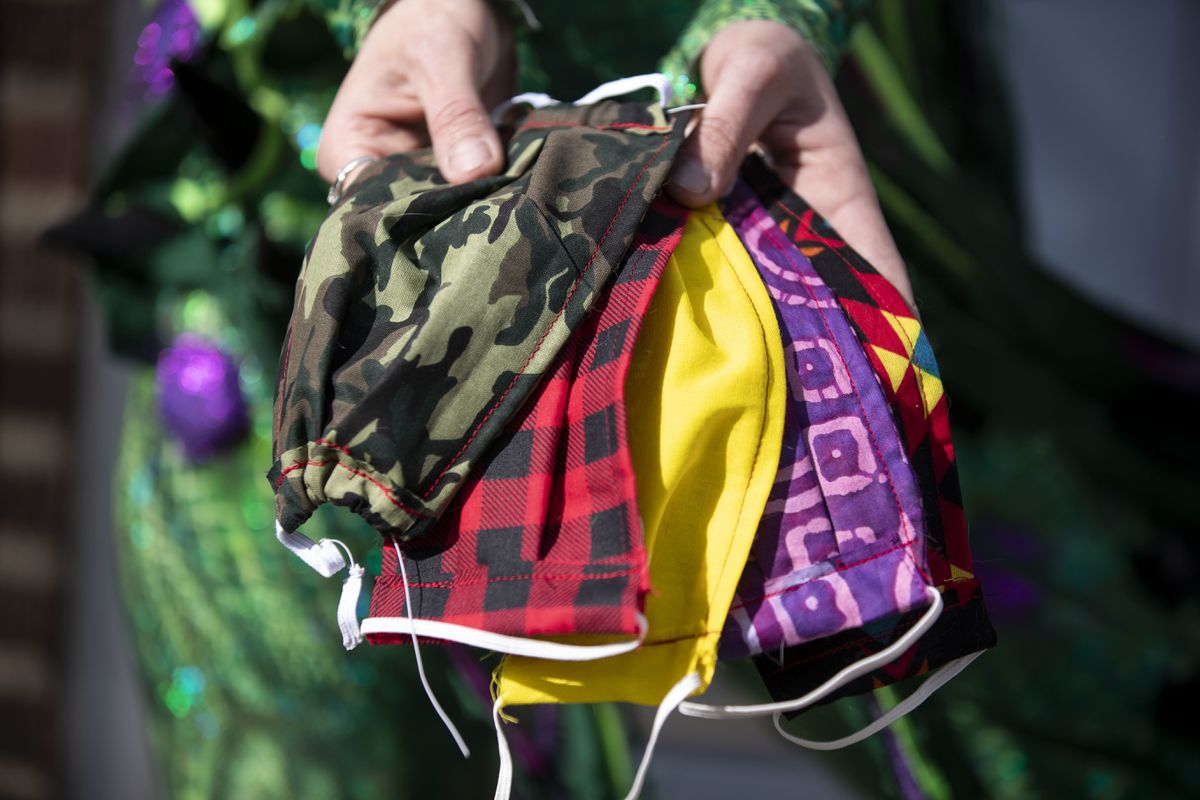As anyone who’s spent time under a mask recently can tell you, the practice isn’t often enjoyable. And as the weather warms up, face masks could become particularly sweaty and uncomfortable.
“Philadelphia summers are tough,” says Nicole Jochym, a third-year medical student at Cooper Medical School at Rowan University who works with the Sew Face Masks Philadelphia organization. “People are going to freak out in the summer when it gets hot.”
Here is what you need to know:
Science-based coverage sent daily to your inbox — all facts, no panic
“You want a breathable fabric,” Jochym says. Her recommendation: Using a mask that is made from 100% cotton. According to the CDC, good options include woven cotton sheets and T-shirt fabric.
While cotton isn’t moisture-wicking, she says, it’s more breathable than synthetic fabrics like polyester, and it could make masks more comfortable in the heat. Avoid filters, Jochym adds, because they are often made from synthetic materials, and can make masks hotter and harder to breathe through.
Your mask should be somewhat snug on your face, but you don’t want it to be so tight that it’s uncomfortable or difficult to breathe through. To solve that issue, says Carrie L. Kovarik, an associate professor of dermatology at the Hospital of the University of Pennsylvania, try out different masks, or use one that has adjustable ties.
“A tie mask probably would be better. Elastic straps can be irritating behind the ear,” she says. “Don’t put it on so tight that you can’t breathe.”
Jochym seconds that, saying that Sew Face Masks Philadelphia encourages using ties because they are adjustable. “Every face shape is different,” she adds; ties have the potential for a better, more comfortable fit.
Cheat sheet: Masks + hot weather
1. Choose a cooler material, like cotton.
2. Make sure it fits snugly but not too tightly
3. Bring extras so you can swap if one gets sweaty.
4. Limit how long you wear one to when it’s needed
5. Moisturize your skin to prevent getting a rash
“In Philadelphia’s hot and humid summers, it could be difficult to get around with just one,” she says. “You have to be able to switch it out as it gets damp on the inside.”
Kovarik adds that health-care workers are often advised to take a 15-minute break from wearing their mask every two hours to give their skin time to air out, which could mean using several masks per day. If you plan to swap your mask, she says, do it at home, or if that is not possible, in an area without other people. “You don’t want to take it off in the middle of everything,” she says.
If hot weather makes wearing a mask uncomfortable, try to limit the amount of time you need to wear one. Masks, the CDC says, should be worn in “public settings where other social distancing measures are difficult to maintain,” such as grocery stores and pharmacies, and Pennsylvania requires masks at all essential businesses.
“Think about when wearing a mask is necessary, and not wearing one when it is not needed,” Kovarik says. You may not need one when driving alone in your car, or sitting solo on your porch — as long as you are maintaining proper social distancing.
To help keep your mask time to a minimum, Jochym says, try planning effective routes to your destination, or plan your trips around the number of masks that you have available. And do not wear your mask off your nose when out in public.
Hot summer weather can cause moisture to build up under a mask, which can irritate your skin (similar to a diaper rash) Kovarik says. That problem, however, may be less common for people wearing cloth masks compared to health-care workers wearing less-breathable surgical or N95 masks.
“In hot weather, you will have a lot of moisture under there, and the skin can break down a little more,” she says. “Moisture from breath or heat builds up, and you can get a rash.”
If your skin does become irritated due to using a mask, Kovarik recommends using a noncomedogenic (non-pore-blocking) moisturizer — and avoid products like petroleum jelly. Apply your preferred salve after wearing a mask to help repair skin.
Additionally, Kovarik recommends not wearing makeup under a mask, as it could further clog your pores.






